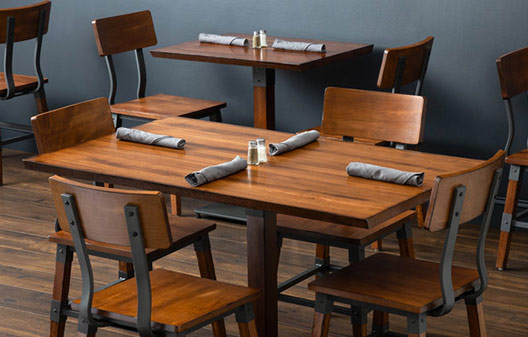
Introduction
When we think about dining experiences, the first things that typically come to mind are the mouthwatering food and the exceptional service. Nevertheless, there is a fundamental component that plays a large part in forming the entirety of our dining experience, and that component is the restaurant table. The choice of tables at a restaurant is about more than just functionality; it may have a significant impact on the atmosphere, the level of comfort, and the degree to which we enjoy our meals.
In this article, we will investigate the complex relationship that exists between restaurant tables and unforgettable eating experiences. Therefore, let’s start on an adventure to gain an understanding of how carefully built tables contribute to the formation of great memories in restaurants.
1. Setting the Stage for Memorable Experiences
Aesthetics: Restaurant tables enhance the visual allure of the dining area and set the stage for a memorable dining experience. From the selection of materials to the incorporation of design elements, tables play a crucial role in establishing a unified and captivating atmosphere. Whether it is a streamlined and contemporary table or a rustic wooden one, the aesthetic appeal of tables sets the tone for the entire dining experience. Elegantly crafted tables can leave visitors with a lasting impression, thereby enhancing their overall enjoyment.
Comfort and Functionality:The comfort of visitors is of utmost importance when creating a memorable dining experience. Well-designed restaurant tables provide sufficient seating space, adequate legroom, and mobility. Table height, ergonomic seating, and cushioning options all contribute to consumers’ comfort and satisfaction. Guests who feel comfortable and at ease are more likely to appreciate their food and remember the dining experience fondly.
2. The Art of Table Selection
Space Optimization: Effective space utilization is crucial in restaurant design. Careful consideration should be given to the available floor space, traffic flow, and desired dining experience. Striking a balance between maximizing seating capacity and providing adequate space between tables for comfort is key. A well-organized dining space allows guests to move freely without feeling cramped or restricted, ensuring a more enjoyable experience.
Materials and Durability: Restaurant tables should be crafted from durable materials that can withstand the rigors of a busy dining environment. Options such as solid wood, metal, or synthetic materials that are scratch-resistant, stain-resistant, and heat-resistant are ideal for ensuring longevity and easy maintenance. Choosing high-quality materials not only ensures the durability of the tables but also enhances their aesthetic appeal.
Style and Theme:The selection of tables should reflect the style and motif of the restaurant. The tables should complement the overall concept, whether the setting is modern and minimalist or cosy and pastoral. Paying close attention to table supports, finishes, and edge profiles can help create a visually appealing dining area. When the tables complement the restaurant’s motif, they contribute to the guests’ unified and immersive experience.
Customization and Branding:Modifying tables enables establishments to infuse the dining experience with their distinct brand identity. On tables, incorporating logos, patterns, or personalised designs adds a touch of exclusivity and leaves a lasting impression on visitors. Customised tables highlight the restaurant’s attention to detail and instill a sense of pride, thereby enhancing the dining experience overall.
3. Transforming Moments into Memories
Atmosphere Enhancement: Thoughtfully chosen restaurant tables contribute to the overall ambiance, elevating the dining experience. The right tables can evoke a sense of sophistication, warmth, or intimacy, depending on the desired atmosphere. This atmospheric enhancement creates a memorable backdrop for shared moments and conversations.
Guest Comfort and Satisfaction:Tables that have been carefully built place a priority on the comfort of the guests, allowing them to unwind and concentrate entirely on the eating experience. A longer period of enjoyment is fostered as a result of comfortable seating, sufficient space, and ergonomic design, all of which add to the overall atmosphere of the restaurant.
Social Interaction and Connection:The layout of a dining room and how the tables are arranged can have an effect on the social interactions that take place there. Tables that promote communal dining or more personal dialogue between guests are conducive to increased opportunities for social engagement and connection. These exchanges help to shape experiences in a way that is memorable and may even result in the formation of new friendships or other noteworthy encounters.
Conclusion
It’s safe to say that restaurant tables have a significant role in shaping enjoyable meals. They do more than just fill space; they set the mood, encourage conversation, and improve the quality of life there.
Every aspect of a customer’s dining experience matters, from the layout and arrangement of tables to the size, style, and even substance of each individual table. A memorable dining experience begins with the table since it provides the setting for the meal. Therefore, it’s crucial for managers and owners of eating establishments to give table selection and placement lots of thought.
Write and Win: Participate in Creative writing Contest & International Essay Contest and win fabulous prizes.


